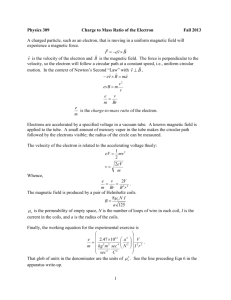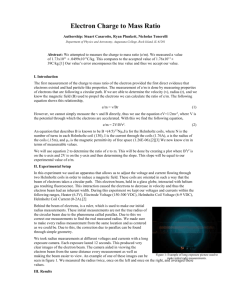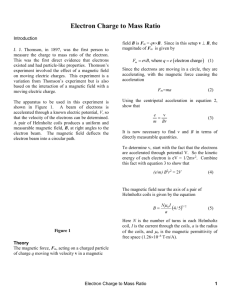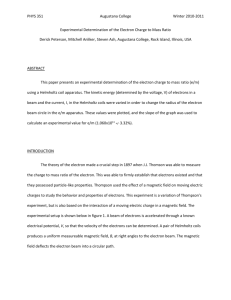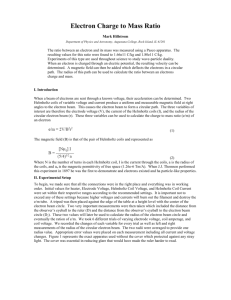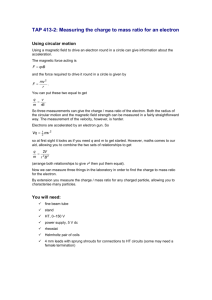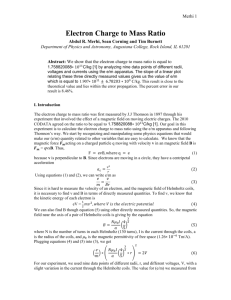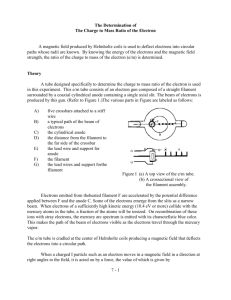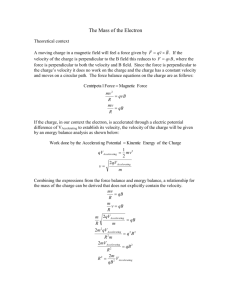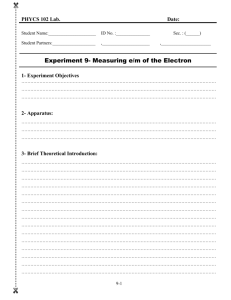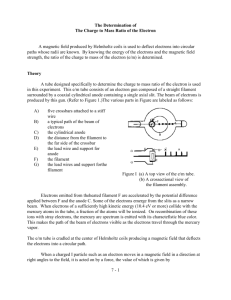124-05 Measurement of the charge_mass taio for electrons
advertisement
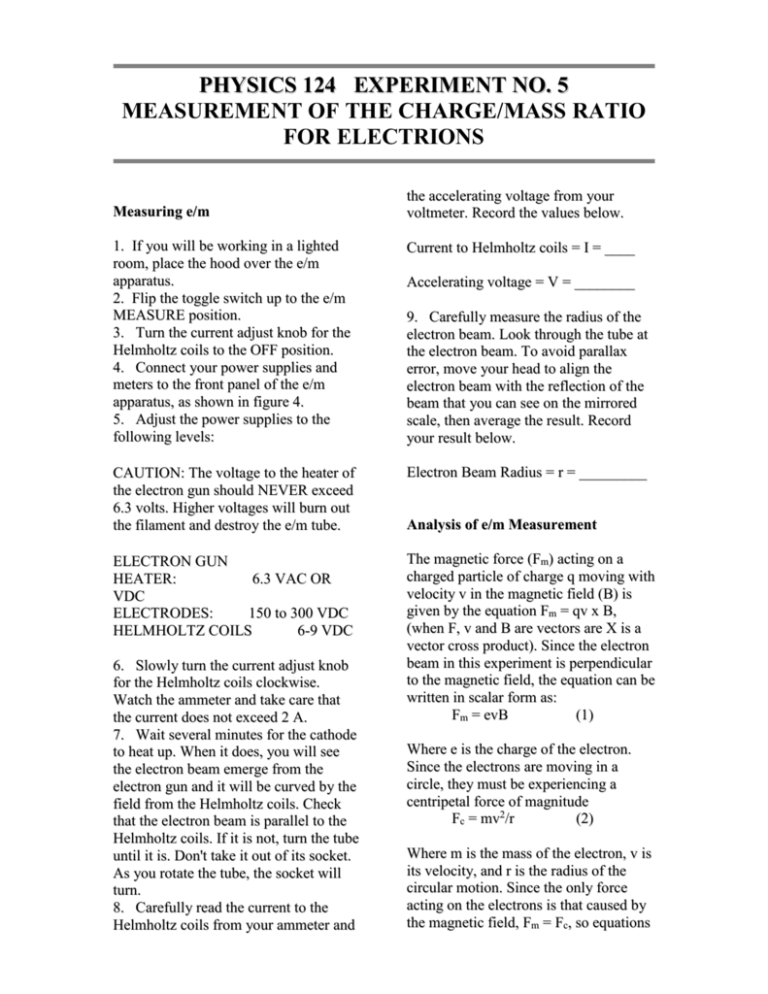
PHYSICS 124 EXPERIMENT NO. 5 MEASUREMENT OF THE CHARGE/MASS RATIO FOR ELECTRIONS Measuring e/m the accelerating voltage from your voltmeter. Record the values below. 1. If you will be working in a lighted room, place the hood over the e/m apparatus. 2. Flip the toggle switch up to the e/m MEASURE position. 3. Turn the current adjust knob for the Helmholtz coils to the OFF position. 4. Connect your power supplies and meters to the front panel of the e/m apparatus, as shown in figure 4. 5. Adjust the power supplies to the following levels: Current to Helmholtz coils = I = ____ CAUTION: The voltage to the heater of the electron gun should NEVER exceed 6.3 volts. Higher voltages will burn out the filament and destroy the e/m tube. Electron Beam Radius = r = _________ ELECTRON GUN HEATER: 6.3 VAC OR VDC ELECTRODES: 150 to 300 VDC HELMHOLTZ COILS 6-9 VDC The magnetic force (Fm) acting on a charged particle of charge q moving with velocity v in the magnetic field (B) is given by the equation Fm = qv x B, (when F, v and B are vectors are X is a vector cross product). Since the electron beam in this experiment is perpendicular to the magnetic field, the equation can be written in scalar form as: Fm = evB (1) 6. Slowly turn the current adjust knob for the Helmholtz coils clockwise. Watch the ammeter and take care that the current does not exceed 2 A. 7. Wait several minutes for the cathode to heat up. When it does, you will see the electron beam emerge from the electron gun and it will be curved by the field from the Helmholtz coils. Check that the electron beam is parallel to the Helmholtz coils. If it is not, turn the tube until it is. Don't take it out of its socket. As you rotate the tube, the socket will turn. 8. Carefully read the current to the Helmholtz coils from your ammeter and Accelerating voltage = V = ________ 9. Carefully measure the radius of the electron beam. Look through the tube at the electron beam. To avoid parallax error, move your head to align the electron beam with the reflection of the beam that you can see on the mirrored scale, then average the result. Record your result below. Analysis of e/m Measurement Where e is the charge of the electron. Since the electrons are moving in a circle, they must be experiencing a centripetal force of magnitude Fc = mv2/r (2) Where m is the mass of the electron, v is its velocity, and r is the radius of the circular motion. Since the only force acting on the electrons is that caused by the magnetic field, Fm = Fc, so equations 1 and 2 can be combined to give evB=mv2/r or e/m = v/Br (3) Therefore, in order to determine e/m, it is only necessary to know the velocity of the electrons, the magnetic field produced by the Helmholtz coils, and the radius of the electron beam. The electrons are accelerated though the accelerating potential V, gaining kinetic energy equal to their charge times the accelerating potential. Therefore eV = 1/2 mv2. The velocity of the electron is therefore: Equations (4) and (5) can be plugged into Equation (3) to get a final formula for e/m: v = (2eV/m)1/2 (4) The magnetic field produced near the axis of a pair of Helmholtz coils is given by the equation: (5) A derivation for this formula can be found in most introductory texts on electricity and magnetism. Where V = the accelerating potential a = the radius of the Helmholtz coils. N = the number of turns on each Helmholtz coil = 130. 0 = the permeability constant = 4 x 10-7 H/m. I = the current through the Helmholtz coils. R= the radius of the electron beam path.
